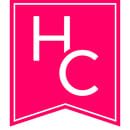Dr. Patricia Bath is known for creating one of the most important tools in improving eyesight. She was born in 1942 in Harlem, New York to Rupert Bath, who was the first black motorman for the New York City subway system, and Gladys Bath, who worked hard in order to save money for her children’s education. She was always pushed by both parents to step out of the box and pursue her dreams and made sure her academics were taking seriously. Because of this, Bath became one of only a few students to attend a cancer research workshop sponsored by the National Science Foundation at 16 years old. Dr. Robert Bernard, the head of the program, was so fascinated with Bath’s discoveries during one of the projects that he included her findings in a scientific paper he presented at a conference. She earned the Mademoiselle magazine’s Merit Award in 1960 because of the hype surrounding her name after Dr. Bernard’s presentation.
Part of a mural at Martin Luther King Jr Elementary School in Oakland, CA.
Bath graduated with honors from Howard in 1968, and got offered an internship at Harlem Hospital shortly afterward, which she accepted. She also began pursuing a fellowship in ophthalmology at Columbia University. As time passed, she discovered that African Americans were twice as likely to suffer from blindness as other patients to which she attended, and eight times more likely to develop glaucoma. Through her research, Bath developed a community ophthalmology system, which increased the amount of eye care used by those who were unable to afford treatment. In 1975, she became the first female faculty member in the Department of Ophthalmology at UCLA’s Jules Stein Eye Institute. The next year, Bath co-founded the American Institute for the Prevention of Blindness, which recognized that “eyesight is a basic human right.” By 1983, Bath had helped create the Ophthalmology Residency Training program at UCLA-Drew, which she also chaired—becoming the first woman in the nation to hold such a position.
In 1981, Bath began working on her most well-known invention: the Laserphaco Probe. By using laser technology, the device created a less painful and more precise treatment of cataracts. She received a patent for the device in 1988, becoming the first African-American female doctor to receive a patent for a medical purpose. With her invention, she was able to help restore the sight of people who had been blind for more than 30 years. In 1993, Bath retired from her position at the UCLA Medical Center and became an honorary member of its medical staff. That same year, she was named a “Howard University Pioneer in Academic Medicine.” She is now an advocate of telemedicine, which uses technology to provide medical services in remote areas. Dr. Patricia Bath is a woman of many firsts and makes a perfect candidate for this week’s African American Spotlight in honor of Black History Month.

